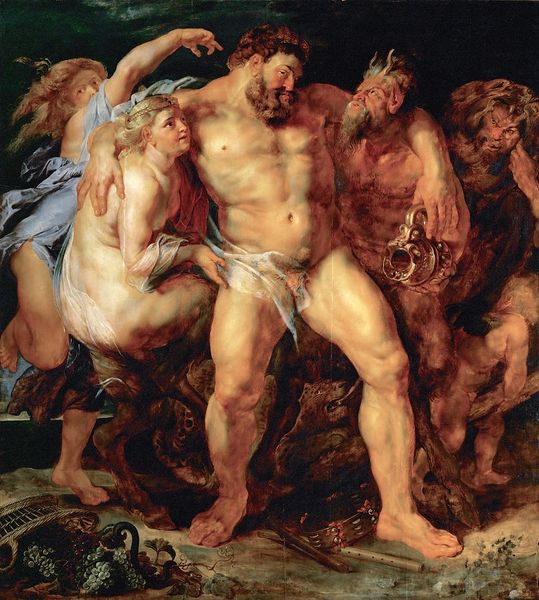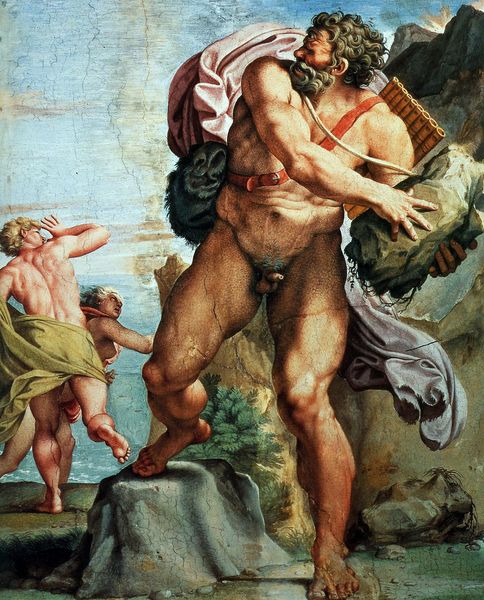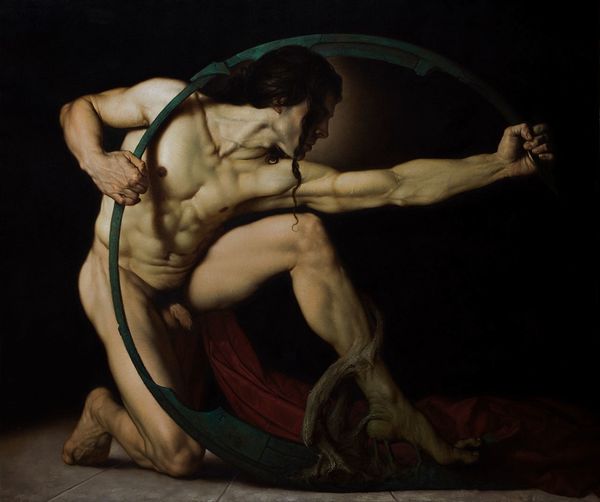
painting, oil-paint
#
baroque
#
painting
#
oil-paint
#
landscape
#
figuration
#
oil painting
#
mythology
#
nude
Copyright: Public Domain: Artvee
Guido Reni rendered this oil painting of Polyphemus sometime before 1642, using traditional fine art materials of the time. Observe the striking contrast between the solid, earthy tones of the rocks and Polyphemus's flesh, with the atmospheric, almost painterly sea and sky in the background. Reni employs a technique of chiaroscuro, using light and shadow to sculpt the figure of Polyphemus, emphasizing his musculature and the strain of his labor. The act of moving such a massive stone becomes symbolic. Is Polyphemus building or destroying? Defending his territory or laying siege? The painting elevates the manual labor of the mythical cyclops to an almost heroic level, reminiscent of the Renaissance fascination with classical antiquity. The choice of oil paint, allowed Reni to blend colors seamlessly and create a sense of depth and volume. It's this mastery of materials and technique that allows him to transform a mythological scene into a powerful statement about strength, labor, and the human condition, blurring the lines between craft and fine art.
Comments
No comments
Be the first to comment and join the conversation on the ultimate creative platform.













